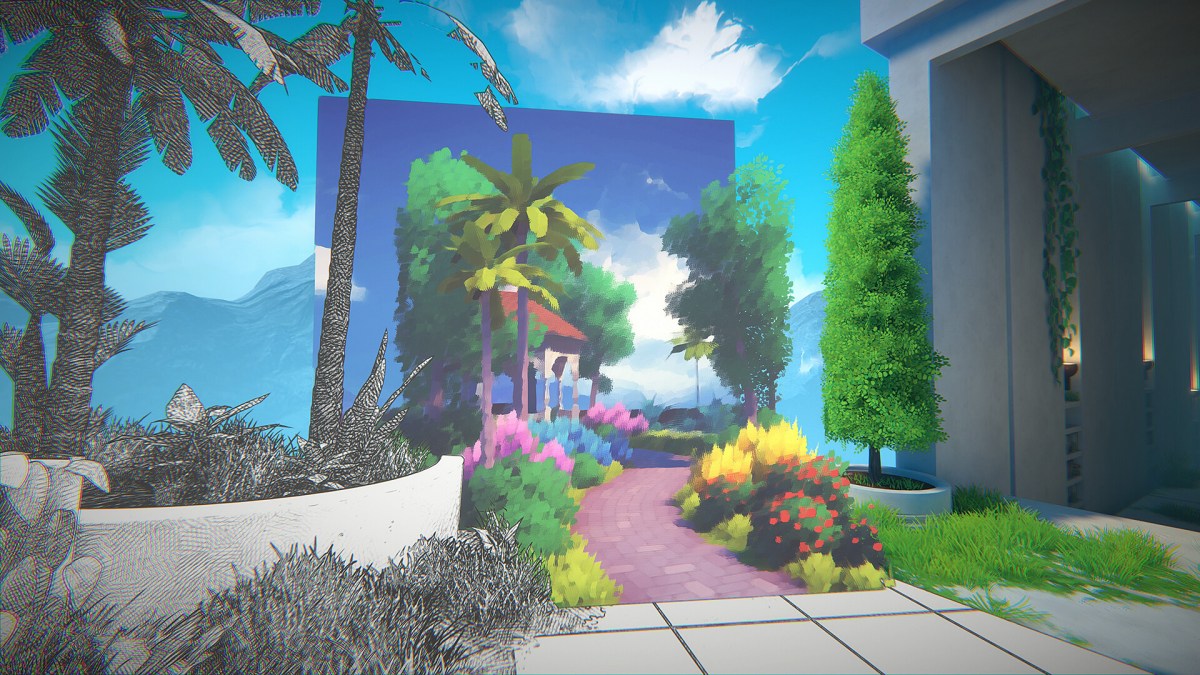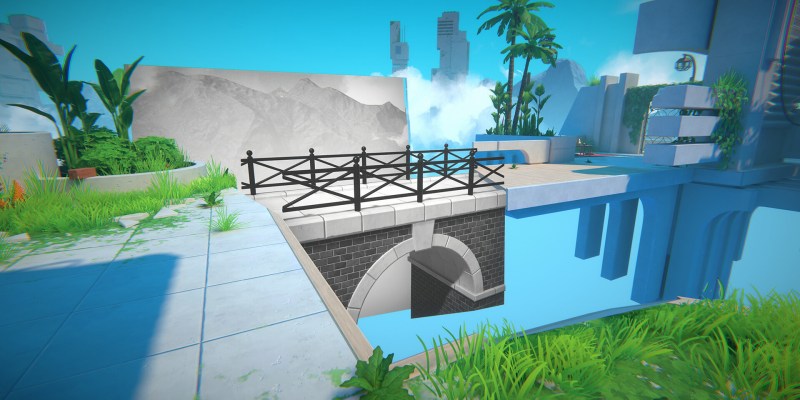Viewfinder is the latest first-person puzzle game to slowly melt my brain and have me rethinking the way I see the world around me, even after I’ve walked away from the television. It follows in the lineage of brain-scramblers like Maquette, Superliminal, Manifold Garden, and The Witness. But the one it’s reminded me most of is 2007’s Portal, and any comparison to Valve’s masterpiece is pretty much the highest praise I can give a game.
To dig into anything too specific regarding Viewfinder would be a disservice to anyone who intends on playing it. So much of the joy I got from it stemmed from seeing what new shape the developers would mold using the clay of the core mechanics. Every new revelation and “aha!” moment brought with it a new, wider understanding of what was possible in any given puzzle.
Very early on in the game, you’re introduced to a magical Polaroid camera. With it, you can take snapshots of anything in the environment, hold up that flat image in front of you, and then suddenly manifest its contents into the 3D world. This will have you creating bridges, replicating batteries, and finding ways around impenetrable walls in no time.
This was all shown off in the demo a few months back, and I honestly thought that this was where the limits of Viewfinder’s puzzles would stretch. But as I inched forward throughout its five-hour campaign, I was in constant awe of how the team kept bringing fresh ideas to the core concept of perspective. And while that runtime might seem short to some of you, I for one was thrilled at Viewfinder’s brevity. In an era where so many games feel padded out and peak far too early, Viewfinder never ran out of momentum, which is another thing it has in common with the original Portal.
While I was sold on the game after its aforementioned demo a few months back, that small slice left out the core framing device in which all of these puzzles exist. Without spoilers, I really dug this overall structure, and it provided a nice anchor to the brain-teasers in the same way that GLaDOS did in Portal or the arc of the relationship did in Maquette. That framing device is also even more prescient in 2023 than the developers had probably intended, so kudos to them for that. Hideo Kojima would be proud.
Adding to Viewfinder’s constant mental stimuli are its charming visuals and colorful palette. The game’s disparate stages floating in an ethereal void bring with them a serene calm. They feel like they exist inside of a late-‘90s screensaver in the same way Neon White’s Toonami-fueled depiction of the afterlife did, which is an aesthetic that I will always be on board for. This is also toyed with in neat ways, like how you’ll stumble across certain photographs with a completely different visual style, and seamlessly traversing between them displays a similar level of creativity to something like in this year’s Spider-Man: Across the Spider-Verse.

But the final thing about Viewfinder that really tied the whole game together was its wonderful rewind feature. At any point in any puzzle, you can hold down a button to rewind everything you’ve done since the start, stopping and resuming at any moment you wish. You can also double-tap the button to instantly go back to the last time you either took a photograph or placed one in the environment, making it a breeze to undo any bad decisions you might have made. This feature helps encourage experimentation and makes sure that the game doesn’t punish you for trying out something extremely dumb, which I certainly did on many occasions. This rewind feature, along with Final Fantasy XVI’s Active Time Lore, are two of 2023’s mechanics that I’d love to see become commonplace among their respective genres.
By this point, you probably know if Viewfinder is a game for you. If you found yourself getting lost in the 3D puzzle-scapes of any of the games I’ve mentioned in this piece, particularly Portal, I can’t recommend this one enough. Go in blind, and prepare to have your brain scrambled in the best possible way.
